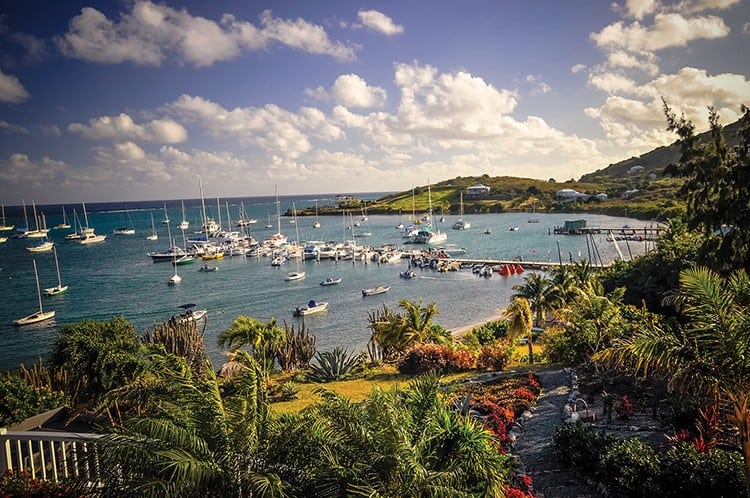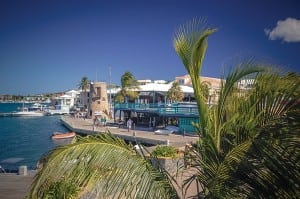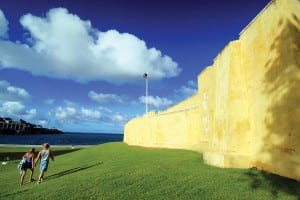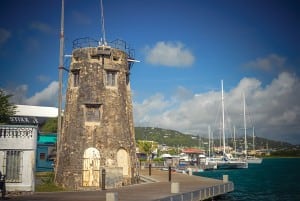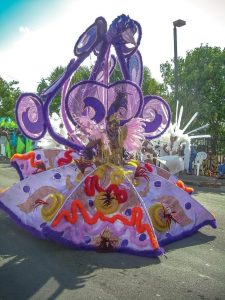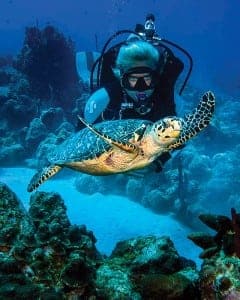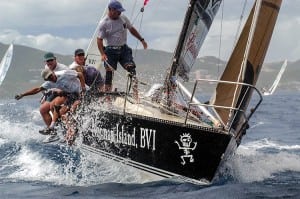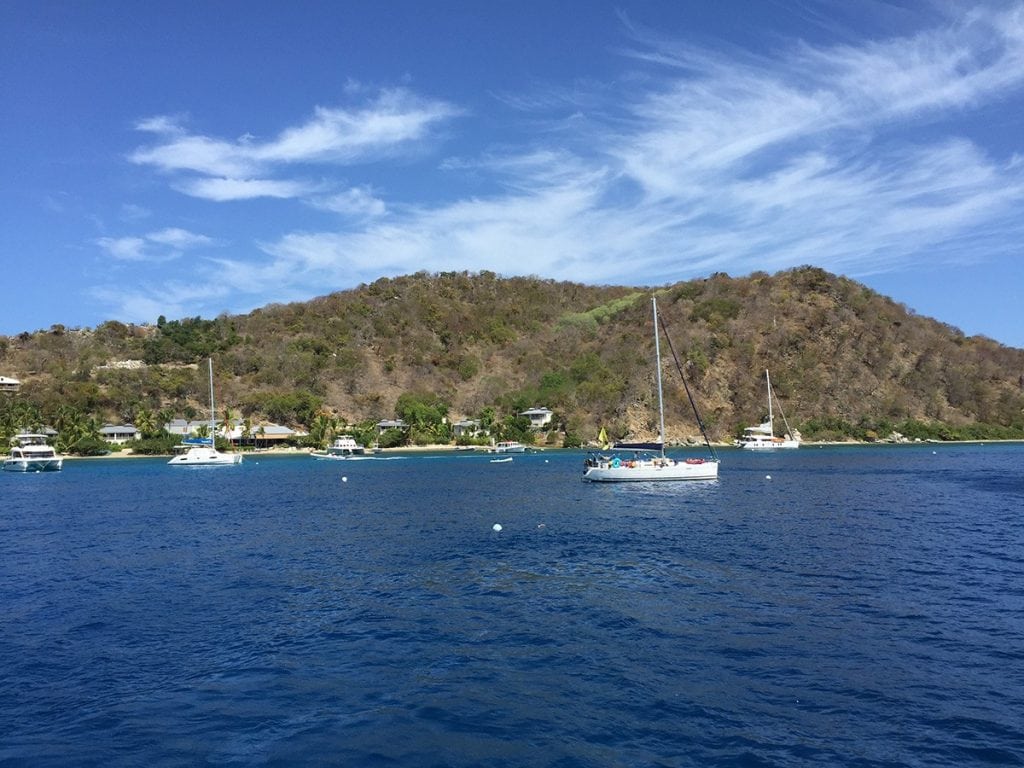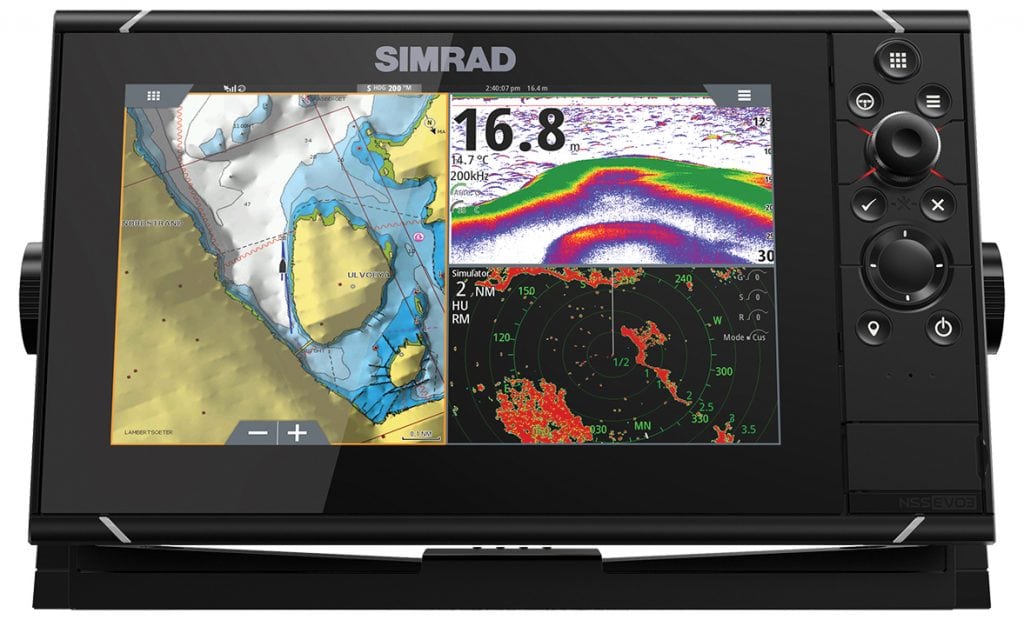The Big Island
St. Croix is set apart from her U.S.V.I. sisters but well worth the journey.
Arrive by sea to St. Croix’s main harbor in Christiansted and you’ll think you’re sailing back in time. Fort Christiansvaern looms large. Its sunny yellow exterior crafted from ballast brick and completed in the mid-1700s once protected against pirates and privateers. Today, the fort is part of the Christiansted National Historic Site, a seven-acre complex of historic buildings such as the Customs House, Scale House, and Danish West Indian & Guinea Company Warehouse that are managed by the U.S. National Park Service and open to the public. Several yards to the west is a two-story tall coral-rock constructed replica of a sugar-era windmill. It’s a beacon to thirsty mariners since nowadays it doubles as a bar on the waterfront’s boardwalk. Then, there’s Christiansted itself. The one-square-mile settlement is an amazing showpiece of 18th-century colonial architecture iconic for its red-hued roofs under which currently sit trendy restaurants, jewelry shops and art galleries. History, a chance to really experience bygone times up close and personal, is what sets St. Croix apart from its sibling U.S. Virgin Islands of St. Thomas and St. John. Yet there is plenty of nature to love on St. Croix, too, as well as a host of modern-day services, luxuries and amenities.
St. Croix’s 84-square-miles makes it nearly triple the size of St. Thomas’ 31-square-miles and over four times larger than St. John—both islands are situated some 40 nautical miles to the north-northeast. The “Big Island”, as its often nicknamed, boasts a few other distinguishing points. For one, St. Croix was the last to become part of the Danish West Indies. The Danes moved south in 1733 to expand their sugar plantation empire, but they weren’t the first to do so. St. Croix has been the most fought over of the Virgins. Seven nations and military groups have laid claim to the island—Spain, the Netherlands, England, France, the Knights of Malta, Denmark, and the United States—the flags of whom line the dock at the St. Croix Yacht Club in Teague Bay. The island’s size proved a boon to the U.S. upon purchase in 1917. Not only did this provide America with a sizable military presence in the Caribbean, it has since proved valuable for investment. Rum, from the Cruzan and Captain Morgan distilleries—both offer tours and sampling bars—is a three-century-old industry that now pumps from $100-250 million back into the local economy annually thanks to a federal excise tax. Until 2011, St. Croix was home to the second largest petroleum refinery in the western hemisphere, which closed in 2012 and is now up for sale. Looking ahead, it’s the island’s location at the nexus of a global fiber optic telecommunications system that has it poised to attract cutting edge commercial enterprises.
But it’s not employment that brings most people to St. Croix. Rather, it’s the mix of laidback civilization combined with the oftentimes deserted beaches and anchorages that provide a Robinson Crusoe feel in the 21st century.
Christiansted is the perfect place to start a visit. This is especially true if you are traveling by sea from a non-U.S. port. The Customs and Immigration office is located one mile east of downtown, in Gallows Bay, adjacent to St. Croix Marine. George Custer, a 30-year veteran megayacht captain, bought this 44-slip marina and boatyard last year. He offers fuel, a chandlery, DIY yard and services such as welding, fiberglass, painting, and resto-mod work—retrofitting classic powerboats and small pedigree sailboats with green technology while maintaining the traditional lines. It’s an easy walk to Gallows Bay and downtown Christiansted where there are plenty of places to eat, drink and shop as well as to arrange a day sail, sports fishing or scuba diving trip. Special events in this area include Happy Hour hermit crab races at the Fort Christian Brew Pub on Mondays, free Jazz concerts the third Friday of each month, and four annual street parties called Jump-Ups held in late November, mid February, early May, and mid-July.
Frederiksted, 15 miles west of Christiansted, is the second largest town on St. Croix. A number of cruise ships dock at the Pier each year, yet pleasure boats must anchor in the open harbor. There are a couple of restaurants, but the real draw here is what to see and do in the surrounding area. Crucian Heritage and Nature Tourism (CHANT) hosts 90-minute historic walking tours of the town when there is a cruise ship in port. The tour group also offers a three-hour tour to the sustainable Ridge to Reef Farm, in the island’s rainforest, where there is hiking, birdwatching and sampling locally grown fruits and vegetables. The Whim Plantation Greathouse Museum, two miles east of Frederiksted, depicts life on an 18th-century sugar plantation and hosts candlelight concerts, starving artist days and an antiques fair. Two miles east of Whim is the St. George’s Village Botanical Garden with its rainforest walk, cactus garden and impressive stand of mahogany trees.
The best anchorages on St. Croix are along the island’s north shore where a barrier reef protects the coastline. One of these is at Salt River, west of Christiansted, where Christopher Columbus dropped anchor and set his crew ashore for food and water in 1493. The Jones family, who arrived to the island nearly 30 years ago and started the first ASA sailing school in Christiansted, renovated and reopened the 40-slip Salt River Marina a few years ago. It has kayak rentals and dive shop. Next door are the construction facilities of Gold Coast Yachts, famous for their seaworthy multihulls.
Teague Bay to the east is another excellent anchorage. The St. Croix Yacht Club, which hosts the St. Croix International Regatta each November and a number of smaller regattas each year, is based here. The Buck Island Reef National Monument, or Buck Island for short, is less than one nautical mile to the northeast. This 176-acre island, which is managed by the U.S. National Park Service, is uninhabited except for day trippers and boasts white sand beaches, a hiking trail and an underwater snorkel trail.
St. Croix, owing to its U.S. flag status, is filled with all the comforts of a home on the mainland. There are large supermarkets, strip malls, big box stores such as Home Depot, and fast food chains like McDonald’s, KFC and Pizza Hut for those with a hankering for the U.S. mainland. Tourism is robust. Luxury resorts such as The Buccaneer, with its spas and fine dining, are perched right on the beach as is the island’s only casino at the Divi Carina Bay Beach Resort. Direct daily flights on American Airlines, US Airways and jetBlue arrive from Miami, Charlotte and Boston, respectively, to the Alexander Hamilton Airport where most rental cars come with GPS as a handy tour guide. Contemporary amenities in a historic setting is what makes St. Croix a best-of-both-worlds cruising destination.
CRUISER RESOURCES
MARINAS
St. Croix Marine, Gallows Bay
(340) 773-0289
info@stcroixmarine.com
stcroixmarine.com
Green Cay Marina, Tamarind Reef Resort
Estate Southgate
(340) 718-1453
tamarindreefresort.com
Salt River Marina
Salt River
(340) 778-9650
PROVISIONS
Plaza Extra
Christiansted Bypass
•Large full-service supermarket
•Open daily
Cost-U-Less, Sion Farm
Christiansted
•Big box store, no membership required
•Open daily
Blue Water Terrace
Cotton Valley
•Small combo restaurant, deli and market
•Open Thursdays through Mondays
By Carol Bareuther, Southern Boating March 2015


